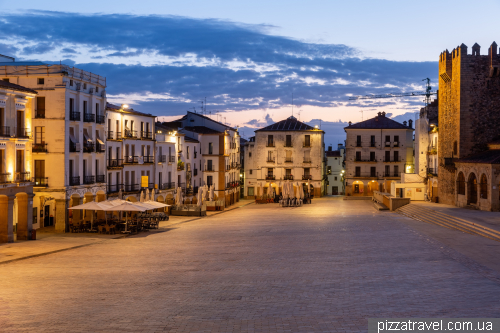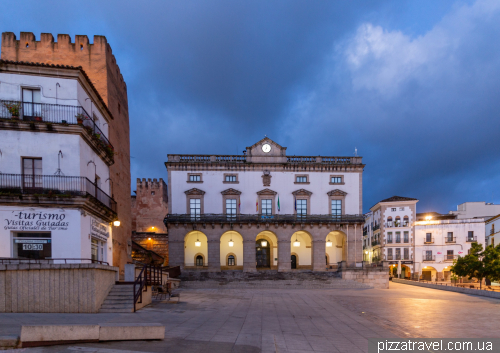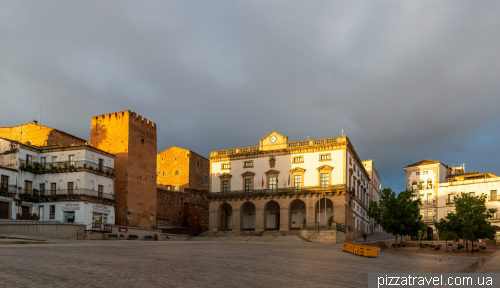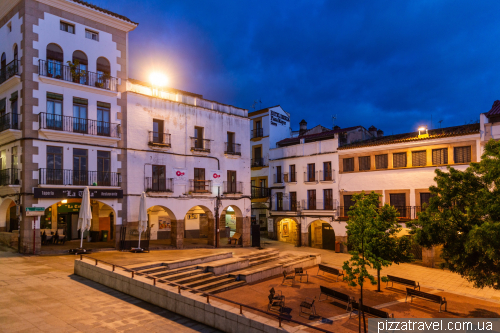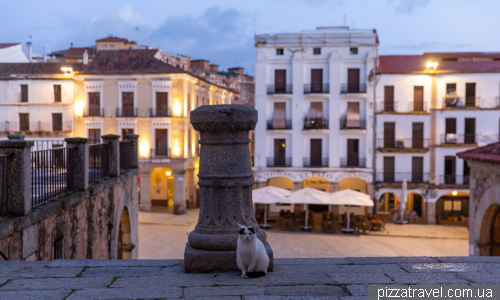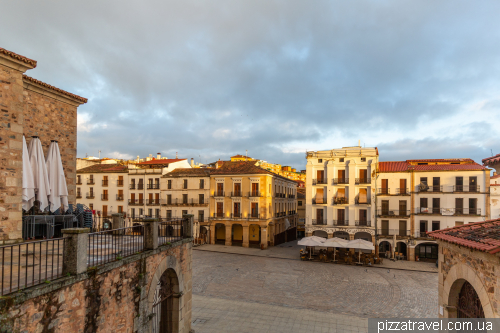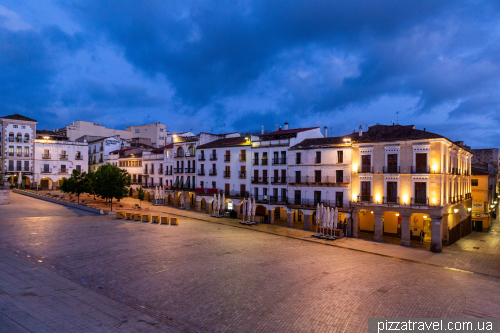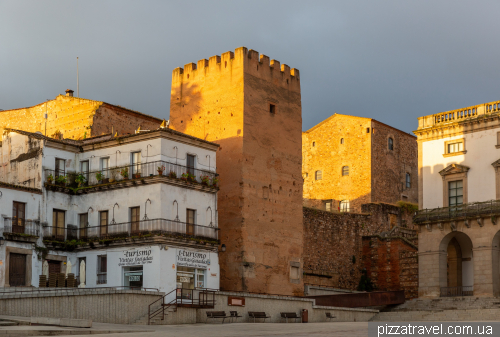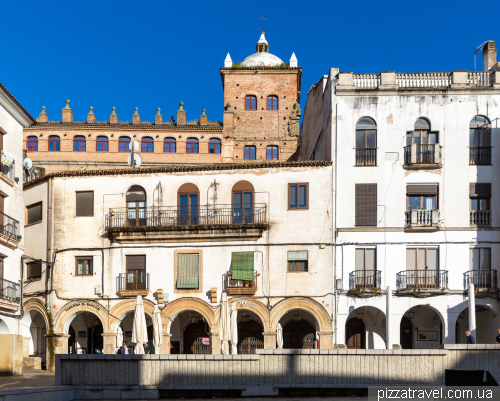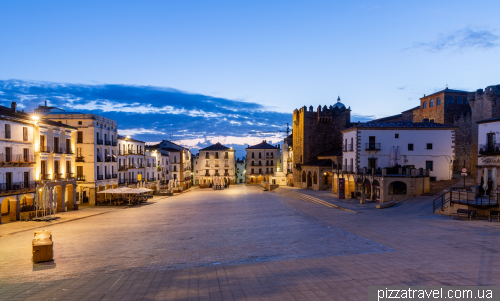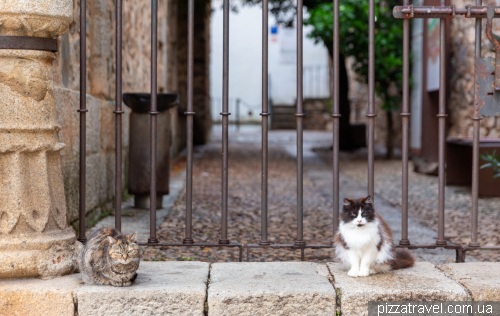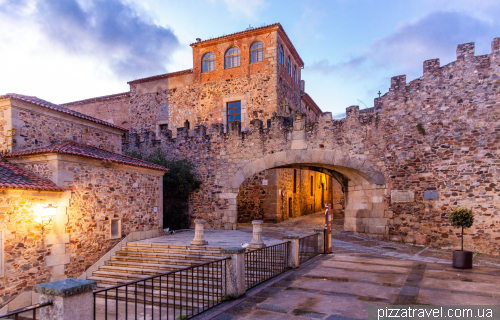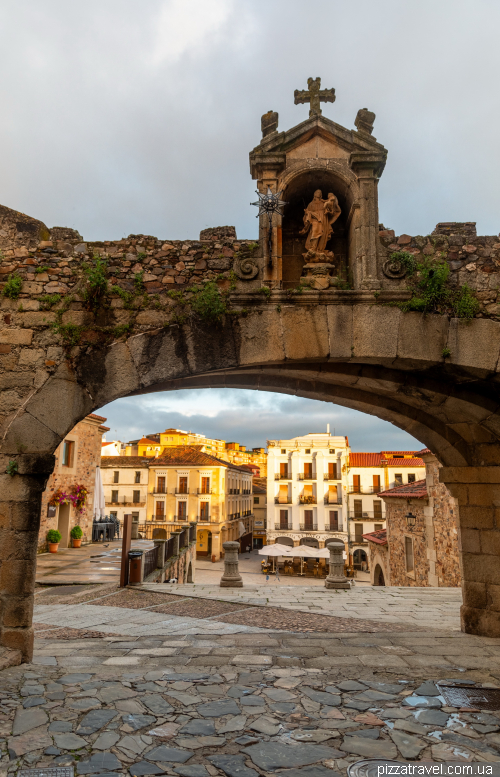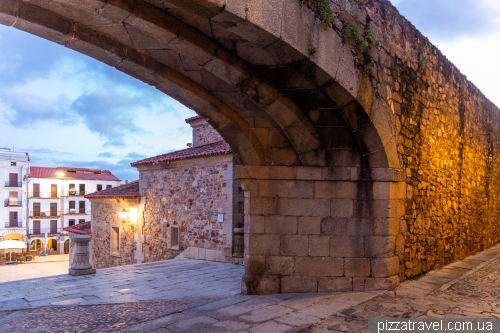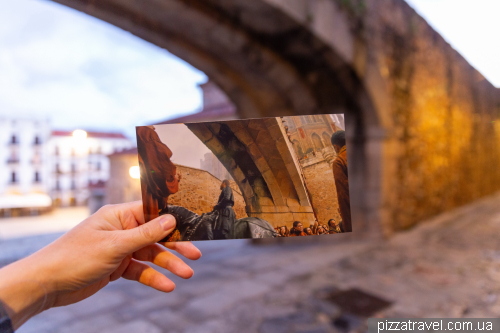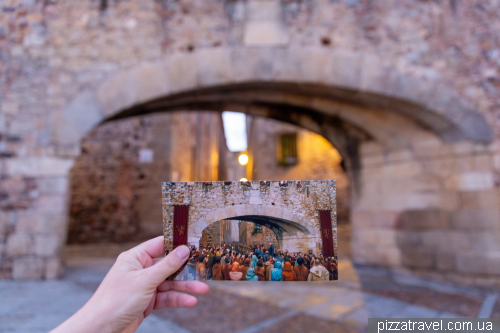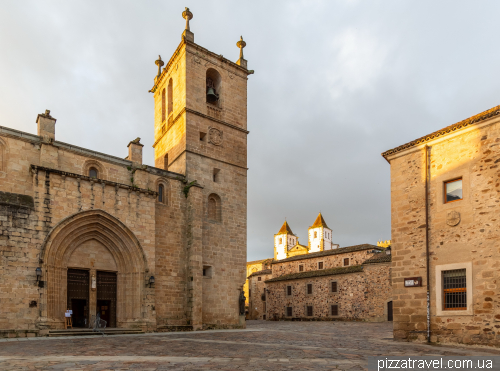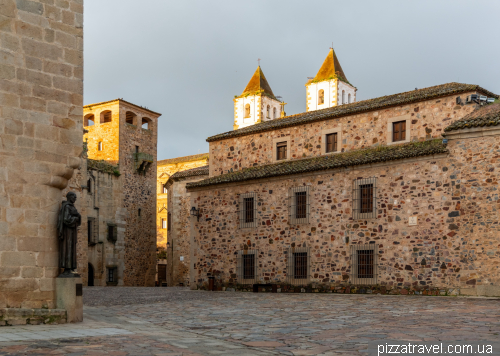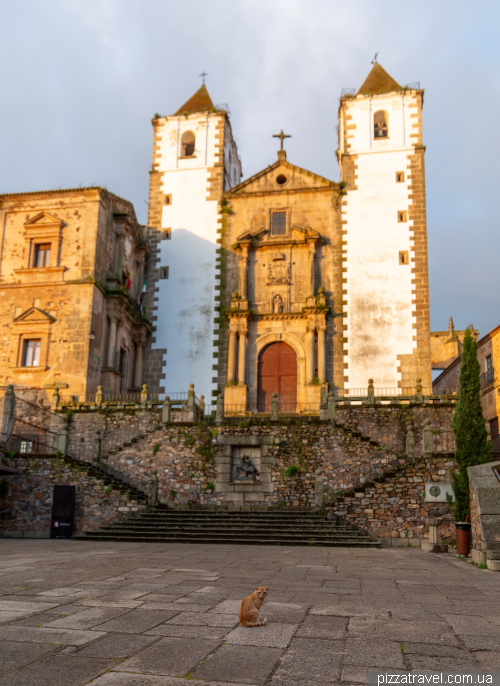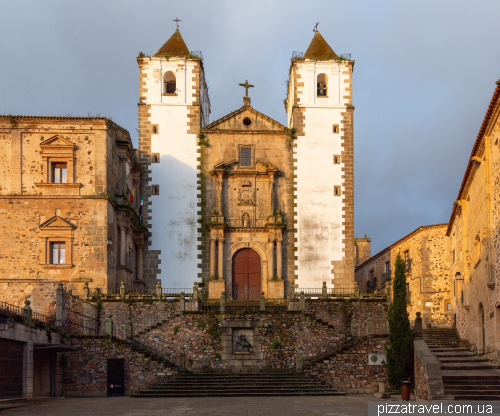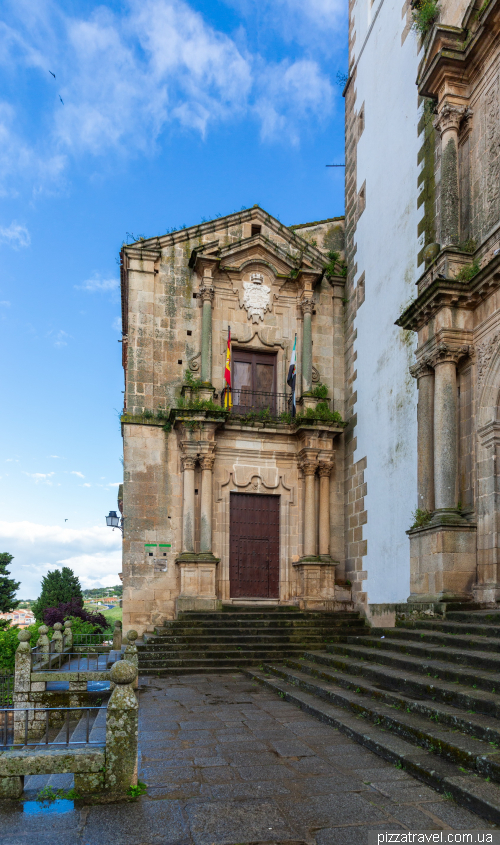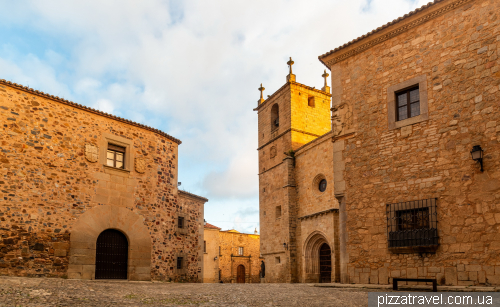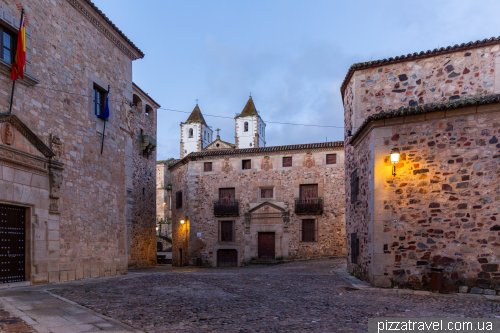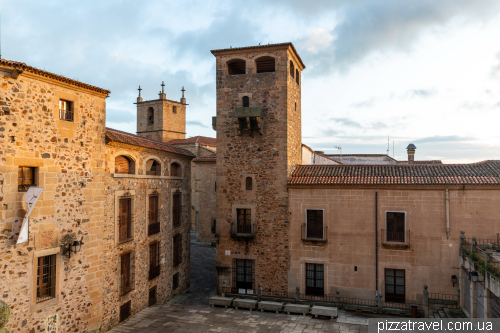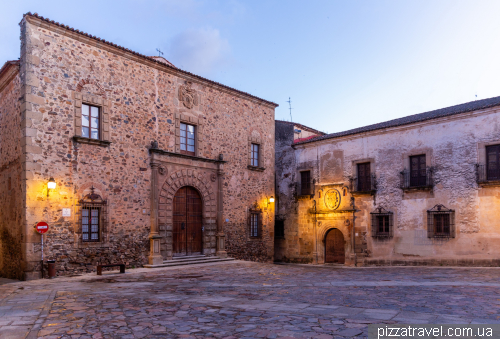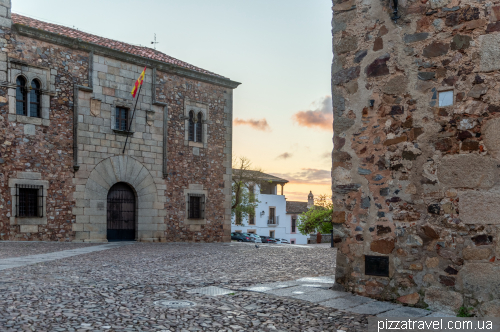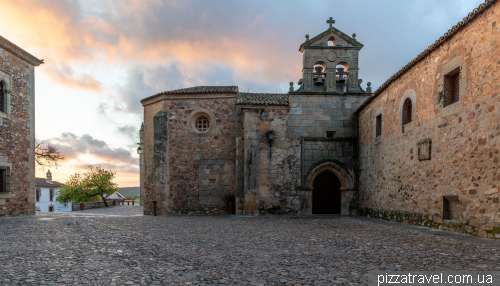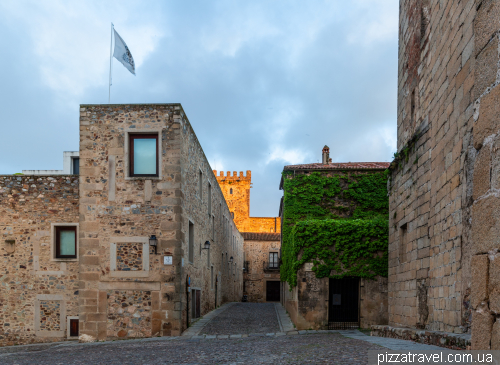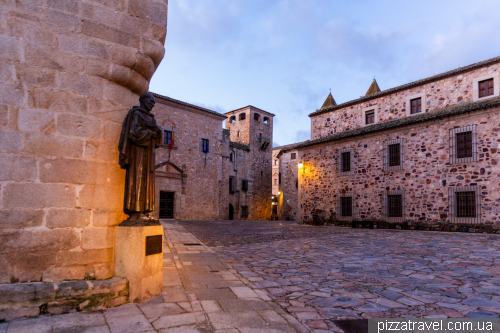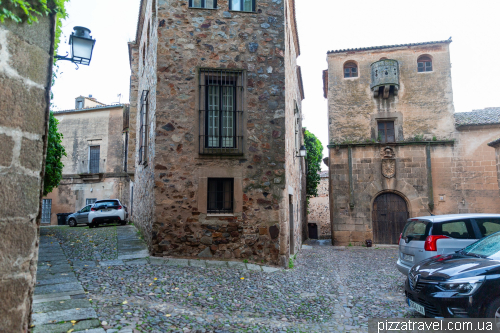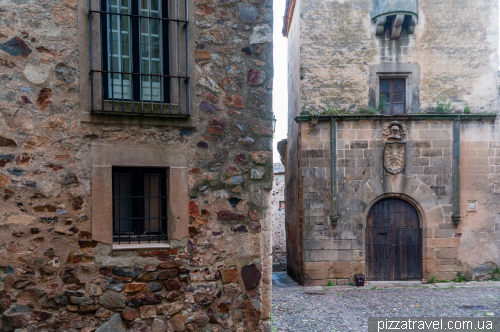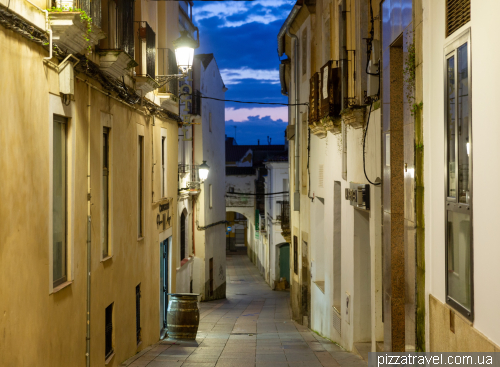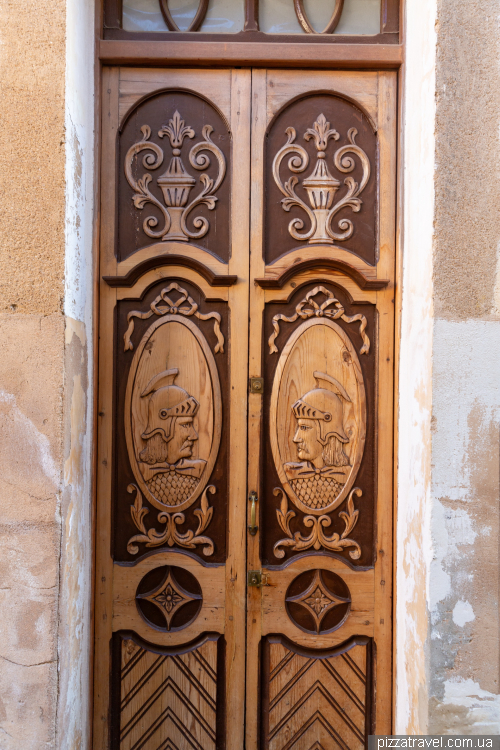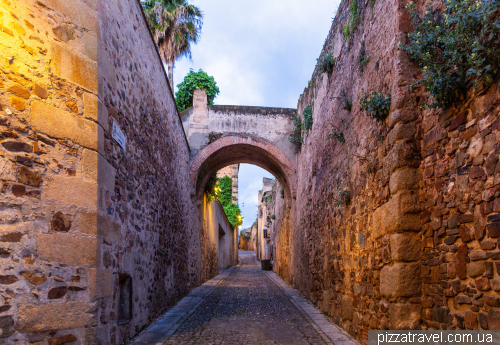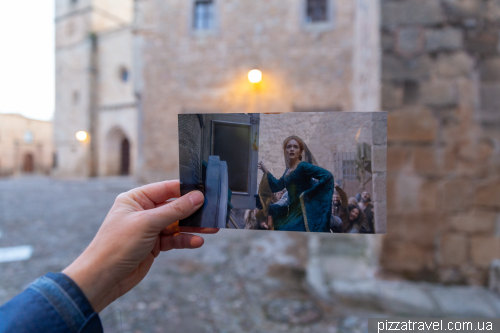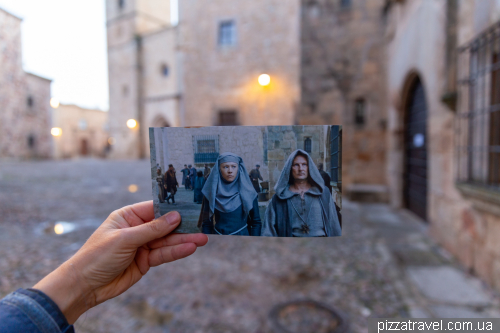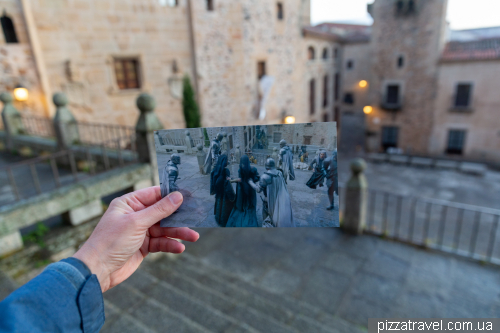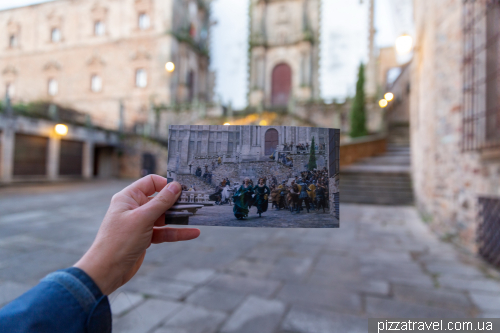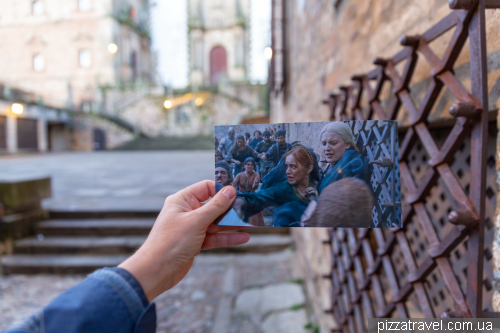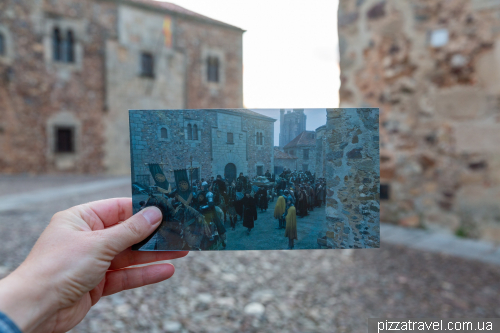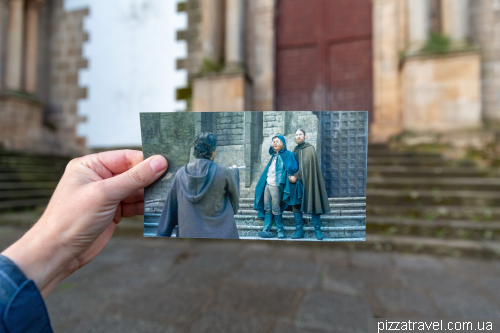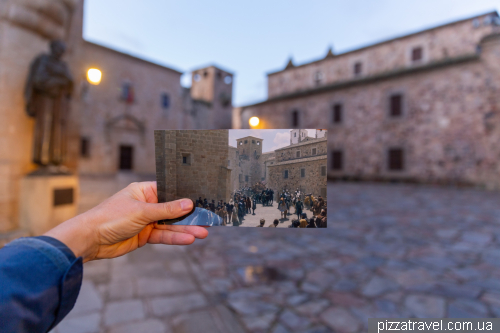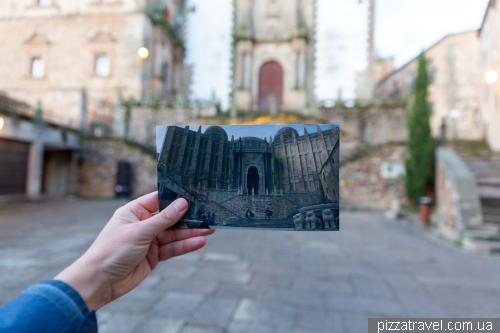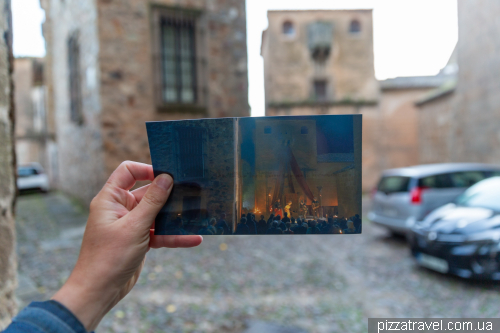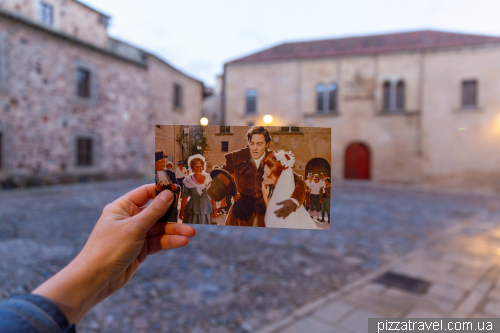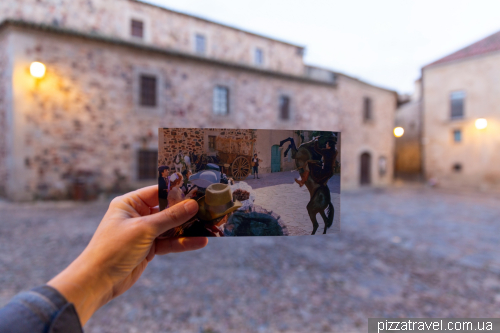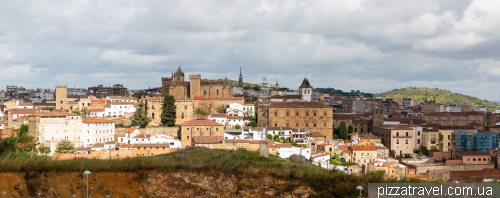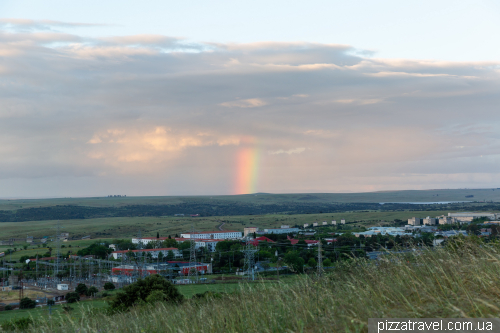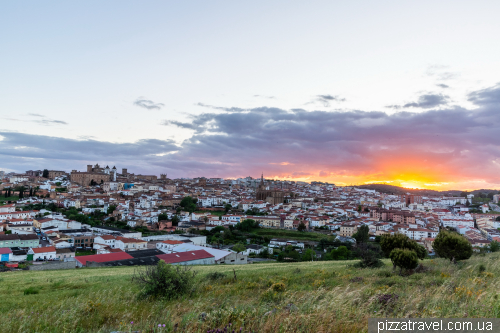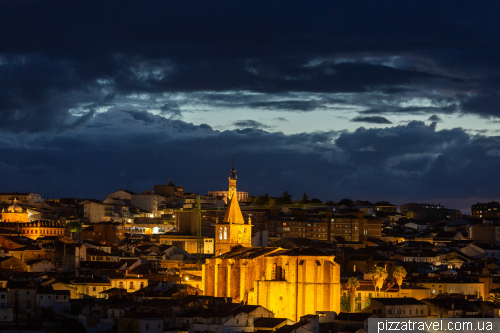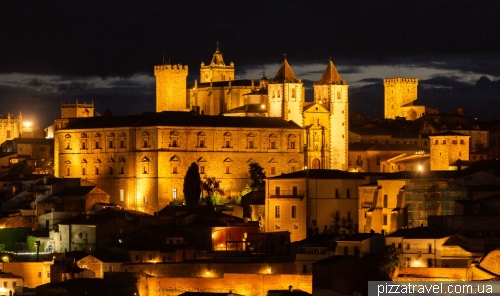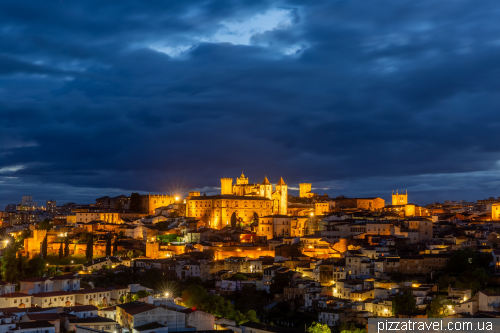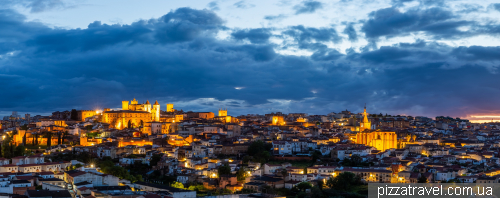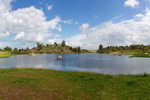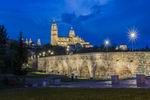The historic centre is incredibly well preserved, despite being quite large. It's easy to feel like you're in the Middle Ages, especially if you walk through the streets early in the morning, before the tourists arrive. The old town has preserved unique examples of Moorish, Roman, Gothic and Renaissance architecture.
A settlement existed on this site as far back as Roman times. In the 8th century, Cáceres fell under Moorish rule, who built fortified walls and towers out of red brick and stone. The characteristic square towers date back to the Moorish period.
In 1229, during the Reconquista, the city was conquered by King Alfonso IX of León and gradually populated by Christian knightly orders. At the same time, the first palaces of the nobility appeared. The 16th century marked the beginning of the city's heyday: noble families who had become wealthy from the discoveries in the New World built their palaces and mansions here.
We stayed at the Gran Hotel Don Manuel (booking.com). It is a large hotel with good underground parking, which is very important in Cáceres, and only 200 metres from the central square.
Plaza Mayor
The main and most beautiful square in the city, surrounded by arcades and towers. There is plenty of open space and restaurants here.
Bujaco Tower (Torre de Bujaco)
Built in the 12th century by the Moors and located in the central square, it is the symbol of Cáceres. You can climb the tower. In total, more than 30 towers have been preserved in the city.
Arco de la Estrella
A beautiful 18th-century arch that served as the main entrance to the medieval city. Familiar to many from Game of Thrones.
Santa María Cathedral (Concatedral de Santa María)
A Gothic church from the 15th–16th centuries with Renaissance elements. You can climb the tower, which offers a good view of the Church of San Francisco Javier.
Church of San Francisco Javier (Iglesia de San Francisco Javier)
A Baroque church with two towers, visible from everywhere.
Cáceres has dozens of 16th-century noble palaces, the most interesting of which are:
- Palacio de las Veletas - inside is the Archaeological Museum and an 11th-century underground Arab reservoir, one of the largest and best preserved on the Iberian Peninsula.
- Palacio de los Golfines de Abajo - museum, open to visitors
- Palacio de Carvajal
- Casa de los Toledo-Moctezuma - associated with the descendants of the last Aztec emperor.
Game of Thrones (S07E03 19:15, 20:23) and House of the Dragon (S01E01 20:27, S01E04 23:42, S01E09 33:02, S02E02 13:38, S02E03 38:48, 56:44, S02E05 4:32, S02E06 50:58) were filmed in Cáceres.
Fans of Alain Delon will find the filming locations of The Black Tulip (1964) here.
There are no viewing platforms in Cáceres, as the old town is located on high ground. We found two places from which you can see the city panorama. The first is here 39.470306, -6.363167, where there is a small car park and you need to walk 100 metres.
The second one is not equipped, but you can park here at 39.476083, -6.365639 and then climb the hill to approximately 39.476389, -6.363000. This is a very good place to watch the sunset if there is no strong wind.
Getting there: 2.5 hours from Madrid and Lisbon. Direct rail links to Madrid and Seville.
